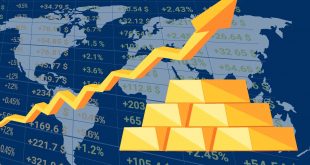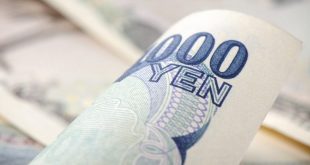The first ECB’s interest rate hike may come this year according to Estonian central bank chief Madis Müller. The ECB will stop its bond purchases earlier than expected. Russia’s attack on Ukraine will diminish growth prospects but not the European Central Bank’s efforts to fight inflation.
The comments from Governing Council member Madis Müller suggest rising odds that the ECB will issue its first interest rate hike later this year as it continues to unwind its pandemic policy.
Even if the war is likely to leave deeper scars on the eurozone’s economy than the latest ECB staff projections suggested in early March, Müller sees little chance of the central bank extending its bond purchases beyond the third quarter.
“We should be careful not to create additional uncertainty in the markets by seeming to waver in our commitment to price stability due to the war in Ukraine,” Müller said, adding that “We are not hesitating in our commitment to price stability, which is our main objective.”
With eurozone inflation now scratching 6 percent, the ECB said earlier this month it’ll stop its bond buys earlier than previously expected. Those purchases will end in the third quarter as long as the inflation outlook continues to permit.
That announcement has prompted some economists to criticize the ECB for moving toward a tighter policy just as the eurozone economy is about to take a fresh hit from the war.
But Müller, considered an ECB hawk, insisted that the central bank is unlikely to keep purchasing bonds beyond the third quarter. “There should be a dramatic shift in the medium-term outlook for inflation for that to change,” he said. “Personally, I don’t see a high probability of that.”
While the war’s economic impact will be more pronounced than suggested by the ECB’s latest forecasts, which predicted a solid rate of 3.7 percent growth this year, “we can still assume that the war in Ukraine will not completely derail the economic recovery in the euro area,” the Estonian central bank chief added.
At the same time, Müller said, the ECB may have to revise its inflation projections up for the near term, given surging food and energy prices, and medium-term trends point to inflation stabilizing around its target of 2 percent.
“It’s important to recognize that we are pretty much at our target, and this is the reason why it’s important to start normalizing [our] monetary policy stance,” he said.
As for the timing of the ECB’s first interest rate hike in more than a decade, it all depends on incoming data, Müller said.
“We shouldn’t rule out interest rate hikes in 2022,” he said. “I wouldn’t be surprised if that will be the case at the end.” Based on the current outlook, benchmark interest rates will move from zero into positive territory some time next year, he added.
Müller also maintains that any adverse impact of first interest rate hikes on growth should be minimal. “Only when we move in positive territory will the impact on the economy become more significant,” he said.
Some economists have expressed growing concern over the rising spreads in eurozone governments’ borrowing costs as a sign that heavily indebted countries may struggle to service their government bond payments.
Italy’s 10-year spreads over the German benchmark rate, for example, rose from 100 basis points in October, when investors started betting that the ECB would phase out asset purchases, to around 151 basis points Wednesday. That spread had peaked at around 170 basis points before the Ukraine war dampened ECB tightening expectations.
Seeking to reassure markets, ECB President Christine Lagarde pledged last week that the central bank stands ready to “use a wide range of instruments to address fragmentation.” And if needed, it will design new tools “to secure monetary policy transmission as we move along the path of policy normalization,” she said.
For his part, Müller doesn’t see cause for alarm. Some widening in spreads is quite natural if the central bank reduces its purchases in the bond market, because it means the price of government bonds of different countries will increasingly be driven by fundamentals, he argued.
“I’d be careful to not distort market signals too much by compressing spreads to a very narrow band, notwithstanding possible changes in the risk outlook for different sovereigns,” he said.
And if there ever is cause for more concern, he added, investors “can take comfort in knowing that the ECB in the past has been able to design and deploy quickly new policy tools.”
As for Estonia, he conceded it would be hit harder by Russia’s war than most member states, coming after a strong recovery from the pandemic. But the country has learned its lesson from the past and reduced direct trade links with Moscow. “In 1998, we had about 20 percent of Estonian total exports going to our eastern neighbor,” he said. “Now it’s about 4 percent.”
The biggest risks, he said, are higher energy and food prices and souring consumer and business sentiment. “There’s a risk that foreign investors sitting further away would see us as geographically so close to Russia that [there’s] a heightened risk that Estonia could be affected,” he said.
As the Estonian central bank updates its forecasts due at end of this month, Müller suggested expectations should be held in check. “We might see a small contraction in real terms in 2022,” he said, adding that inflation will come down from its 12 percent peak more slowly than previously expected.

 Noor Trends News, Technical Analysis, Educational Tools and Recommendations
Noor Trends News, Technical Analysis, Educational Tools and Recommendations




